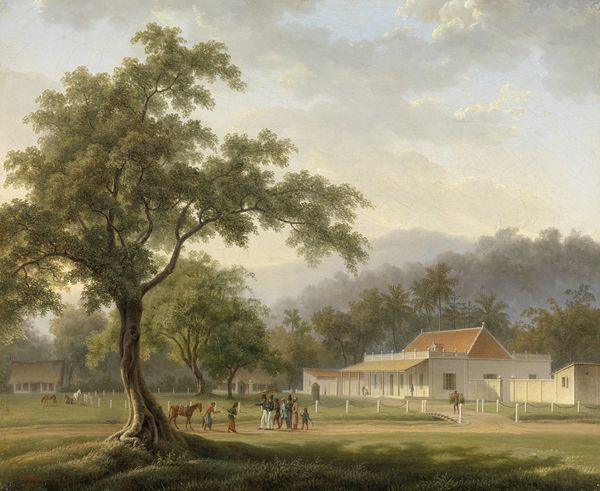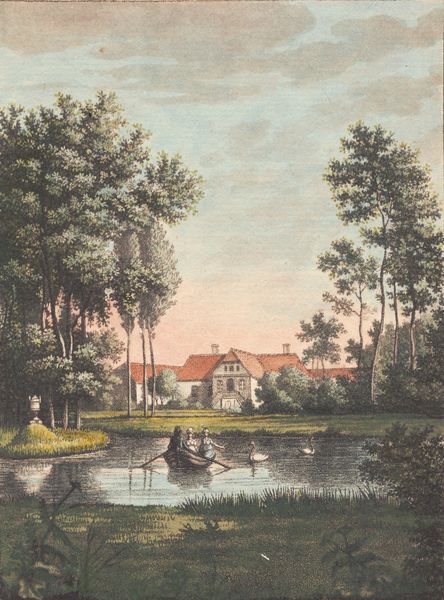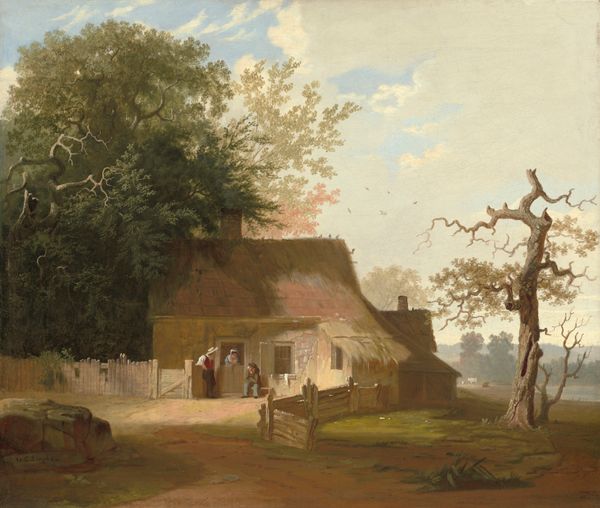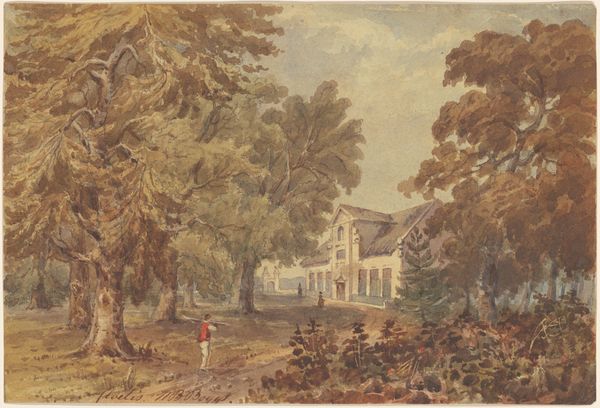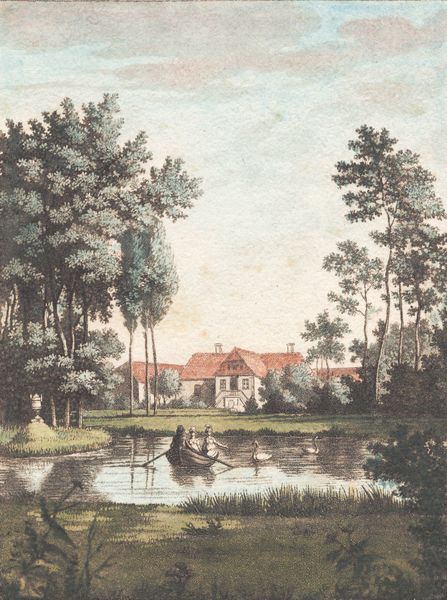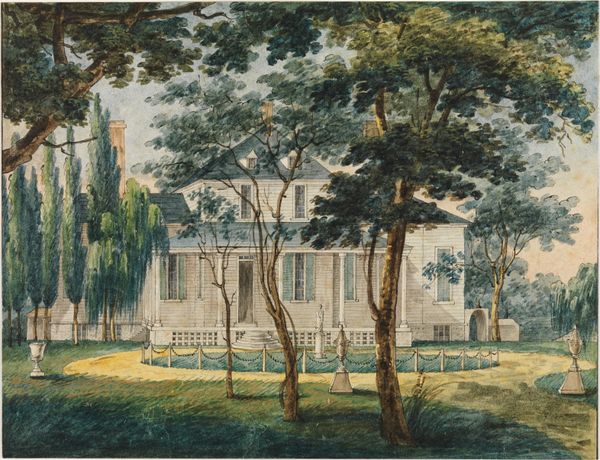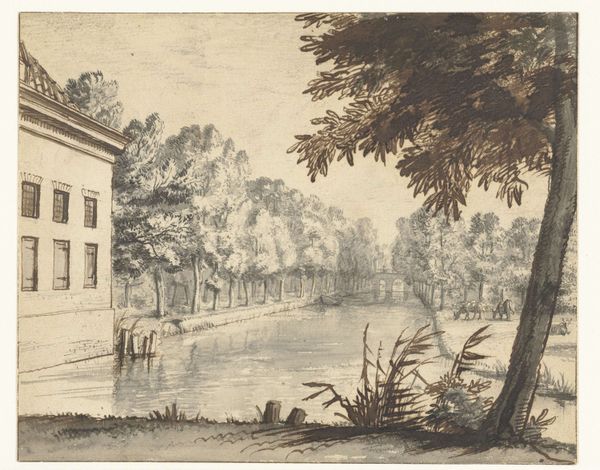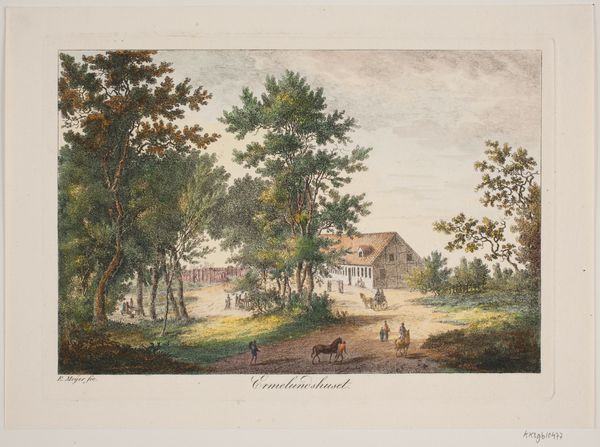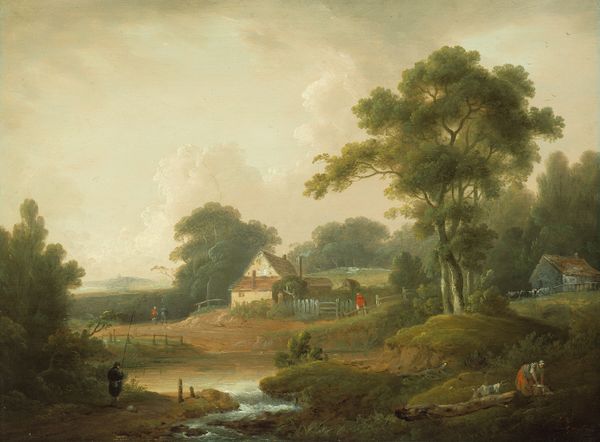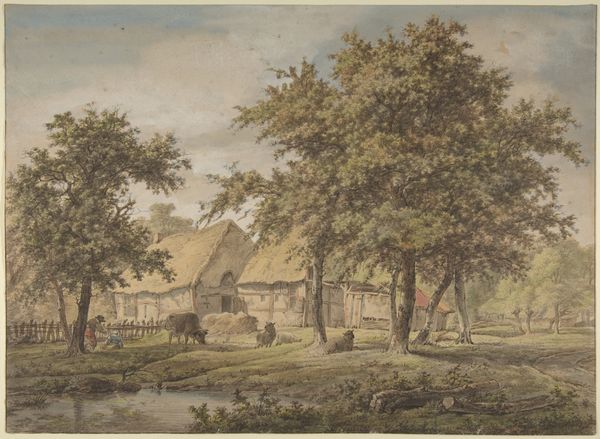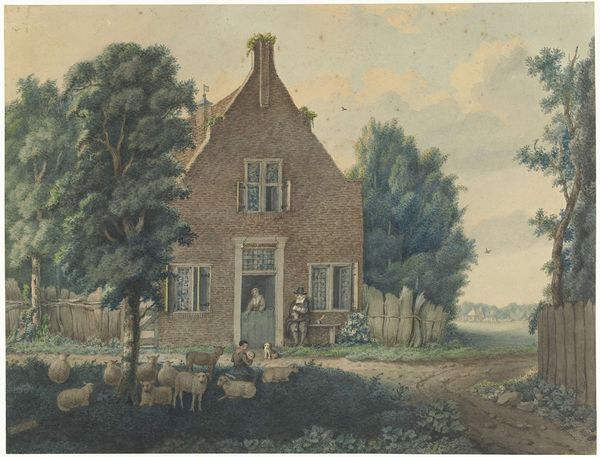
painting, oil-paint, architecture
#
dutch-golden-age
#
painting
#
oil-paint
#
landscape
#
oil painting
#
cityscape
#
genre-painting
#
architecture
#
realism
Dimensions: height 35.5 cm, width 53 cm, height 60 cm, width 77 cm, depth 9.6 cm, height 35 cm, width 52 cm
Copyright: Rijks Museum: Open Domain
Curator: Looking at this oil painting, "Het buiten Zorg Vrij aan de Kleine Houtweg te Haarlem," crafted in 1883 by Everhardus Koster and held at the Rijksmuseum, what's your immediate impression? Editor: There’s a profound stillness to it, almost haunting. The way the light filters through the trees, highlighting the estate… it feels like a captured moment, pregnant with untold stories. Curator: It’s a fascinating depiction of leisure, and an intriguing record of social aspiration in 19th century Haarlem. We see the architectural symbols of status, the manicured garden, all intended to convey prosperity and refined taste. It is worth noting the historical importance of that area, the Kleine Houtweg was for a long time known for its many outside places of the wealthier inhabitants. Editor: And what about the two figures walking in the left side? I'm particularly drawn to those figures on the path. To me, they're less about specific identity and more like symbols of transience against the permanence of this manor house. Do you see them relating to the "Zorg Vrij" or "Carefree" suggested in the painting's title? Curator: Ah, precisely! The figures are placed in a certain way on the path and in front of the walls of the estate which may symbolize not merely prosperity but a sort of self-imposed boundary and the isolation from the society of the owners with the common people. The artist cleverly used the building as a representation of societal power structures. This piece gives voice, unintentionally, to what such a building represents to the lower classes in that same society. Editor: Koster seems aware of this complexity, too. He doesn't just glorify wealth; he positions it within a wider social landscape, using light and shadow to create an interesting play of contrast. Curator: True, and that contrast serves to make us, the viewers, reflect on what we, ourselves, project onto these types of structures. What cultural baggage do we, unconsciously, bring into our interpretation of this landscape and this manor? Editor: It feels very modern in a way. Koster holds a mirror up to our gaze, asking us what we truly value. What a subtly powerful painting. Curator: Indeed, a silent conversation across the centuries, triggered by this snapshot of a "carefree" estate.
Comments
No comments
Be the first to comment and join the conversation on the ultimate creative platform.


